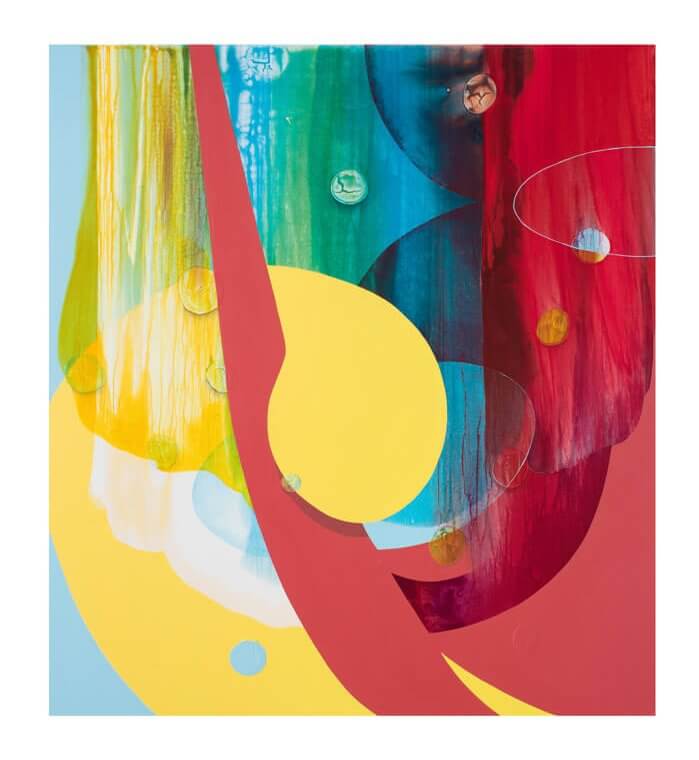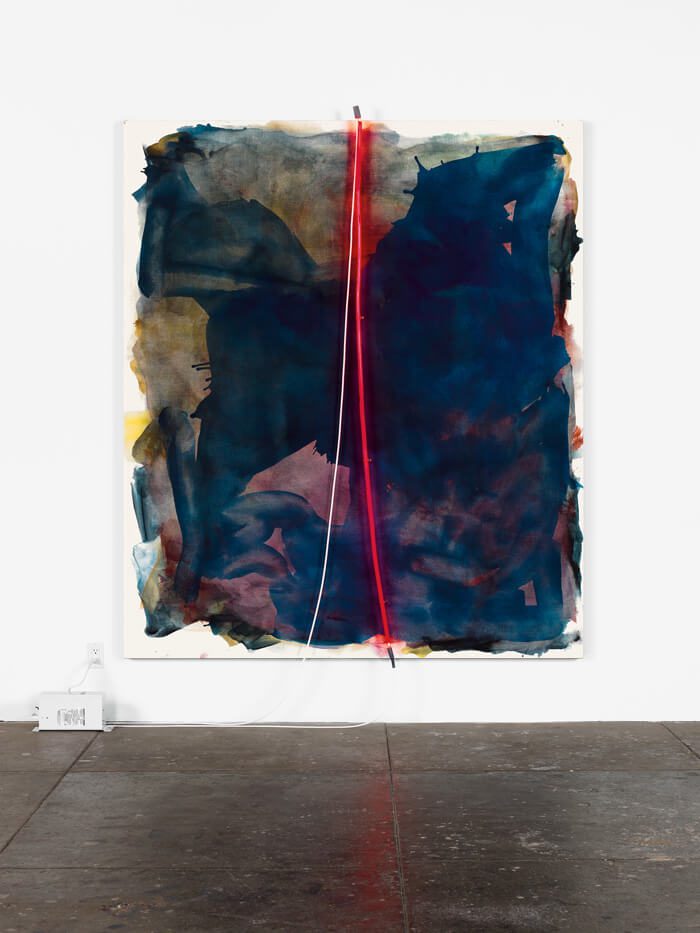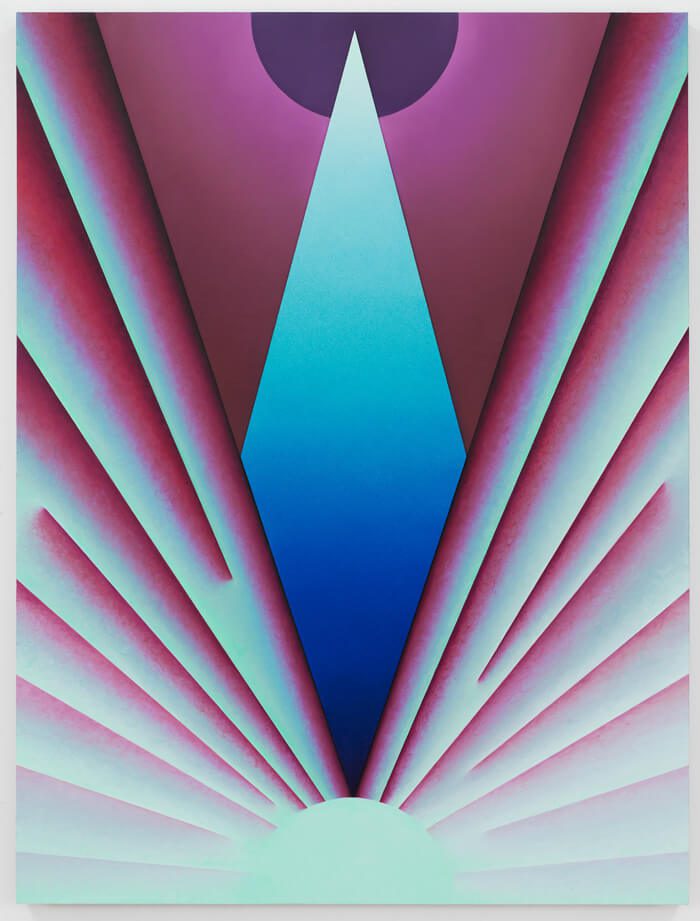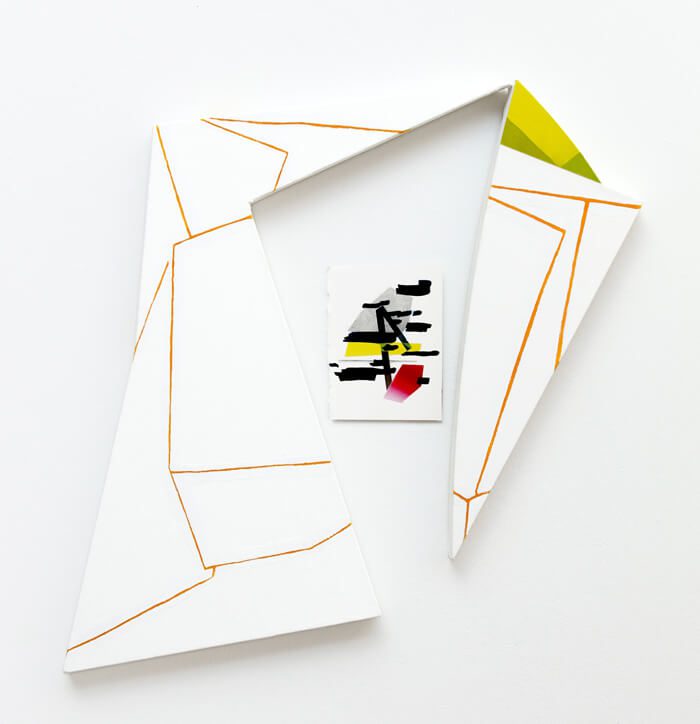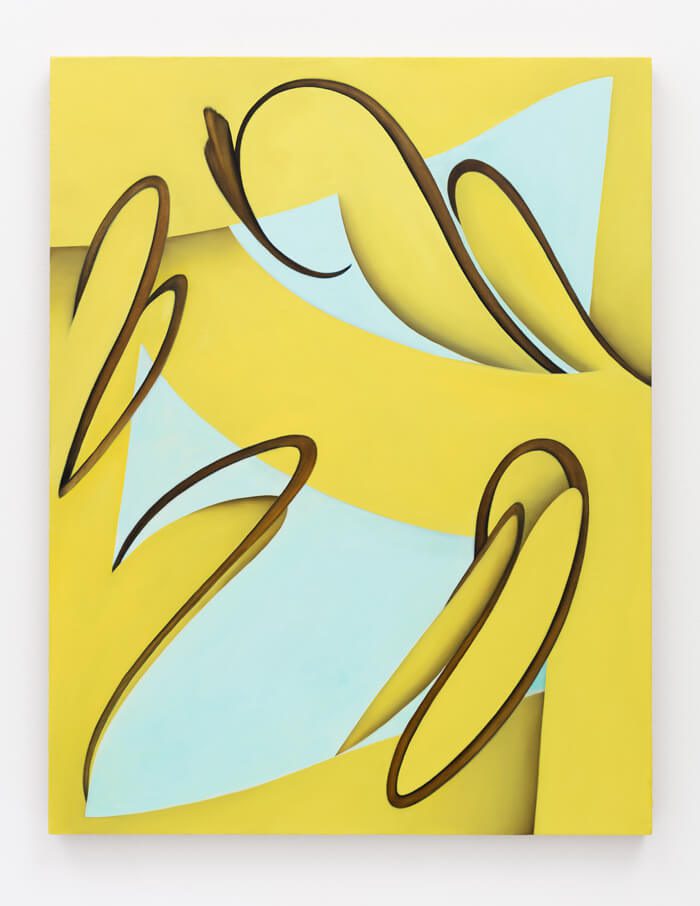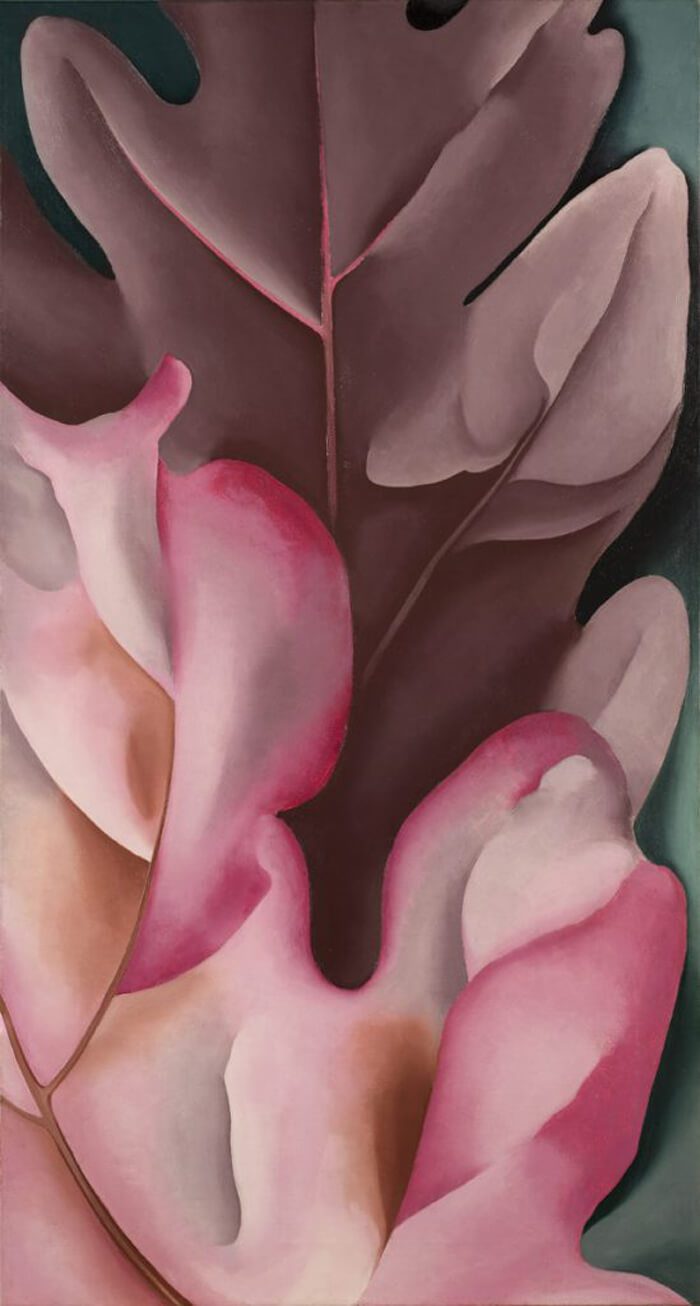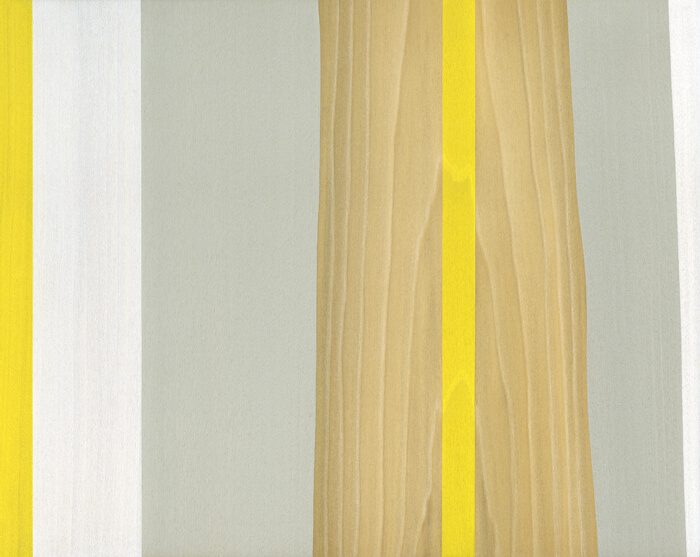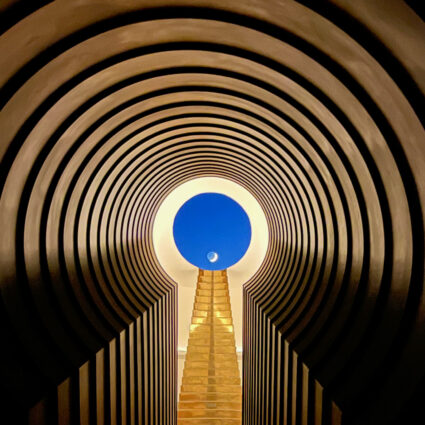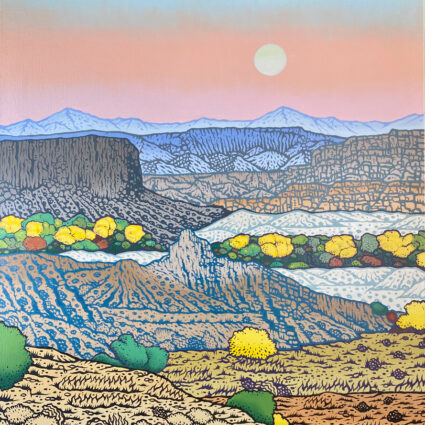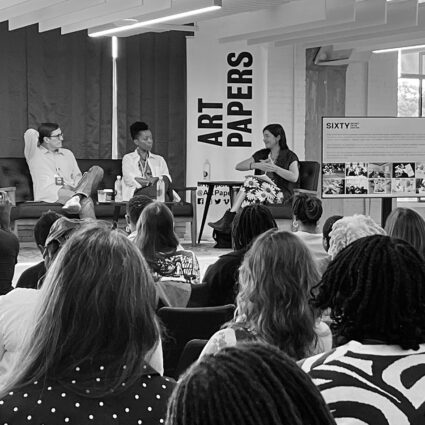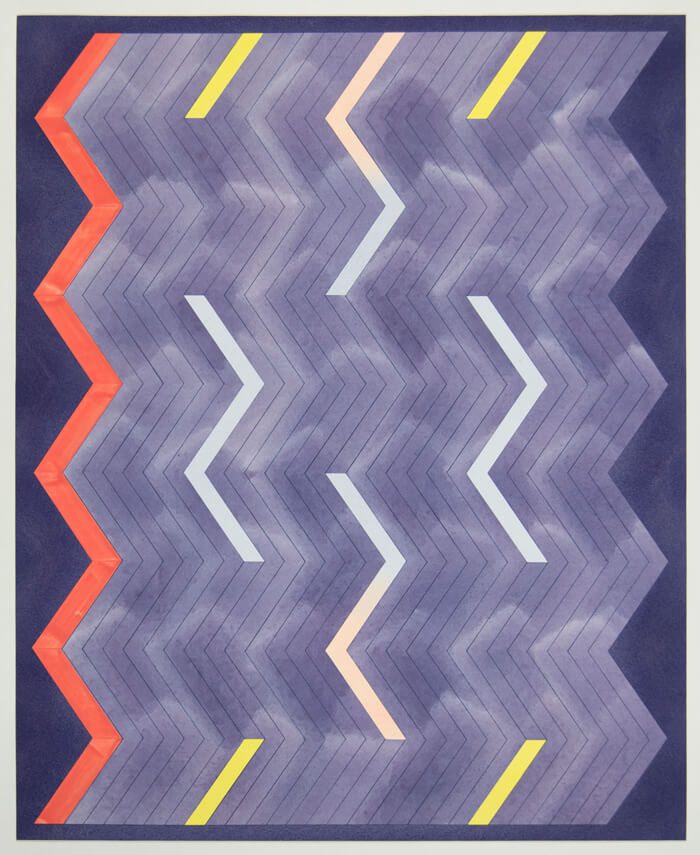
MCA Denver, Denver, Colorado
February 14 – May 26, 2019
Aftereffect: Georgia O’Keeffe and Contemporary Painting is not only a vibrant and eye-catching show but also an exercise in understanding how artists can be influenced by legendary painters without resorting to outright imitation. Aftereffect gathers together twelve present-day painters and mixed-media artists with divergent styles, including Jeffrey Gibson, Melissa Thorne, Carrie Moyer, and Matt Connors. In wall texts scattered through the exhibition, the artists reveal the particular elements of O’Keeffe’s style and persona that resonate in their own work. Yet reverberations of O’Keeffe in the art itself tend toward the subtle, or matters of interpretation. Many of the works don’t say “O’Keeffe” at all upon first viewing.
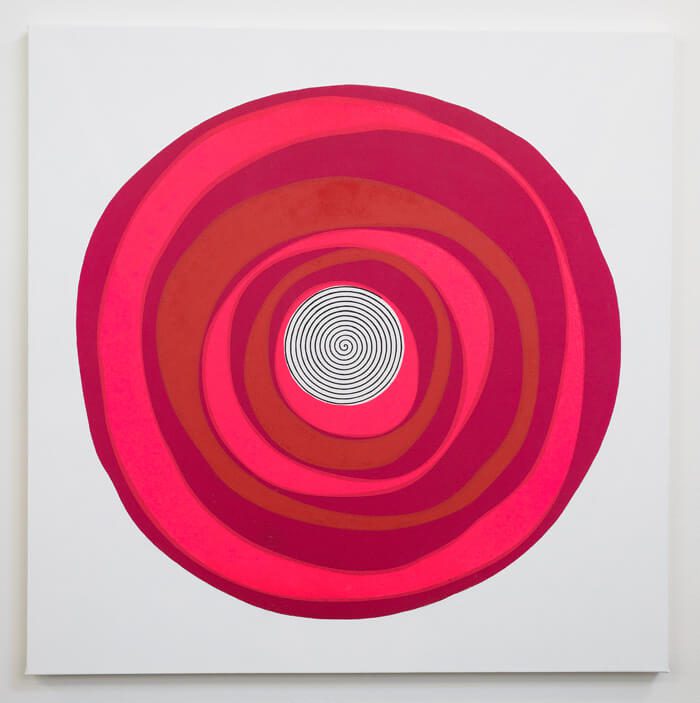
The exhibition’s organization guides us into recognizing O’Keeffe’s imprint in at least five areas: the blurred line between abstraction and representation, expressive blotches of color playing off one another, experimentation with scale, intimacy with nature, and underlying eroticism. Several O’Keeffe paintings are on view as well, for comparison’s sake and for the sheer enjoyment of seeing them. For instance, the majestic Datura and Pedernal (1940) attests to the artist’s love of northern New Mexico as well as her distinctive handling of landscapes.
One of the artists whose work is most reminiscent— but not imitative—of O’Keeffe is Lesley Vance. Her sinuous abstract paintings can suggest floral or heart imagery, with their intense fields of magenta, pink, deep greens and yellows, and even the eggshell white often seen in O’Keeffe’s work. There is a more direct line to O’Keeffe for Mary Weatherford, whose works on view include Georgia, from a series of cave paintings that Weatherford says were inspired by O’Keeffe’s ability to capture emptiness through paintings of doorways and desolate landscapes. Georgia consists of blue and white folds around the black void of a cave, in which a tiny starfish floats.
Loie Hollowell acknowledges in her artist’s statement that O’Keeffe resisted a reading of her work as sexual or erotic, yet Hollowell’s Deep Purple Pound Over Red Mound (2017) can be read as both sexual and as an homage to O’Keeffe’s famous blown-up floral imagery. Whether O’Keeffe painted female genitalia doesn’t especially matter. Hollowell’s undulating waves of purple reaching downward toward a red Styrofoam opening is erotic and compelling. Meanwhile, the pattern-based paintings by Emily Joyce help lead viewers to an understanding of the rhythm—the pulsing nature of isolated colors—in O’Keeffe’s work. Joyce’s The Five (2018), with its symmetrical arrangement of checkerboards and stripes, calls to mind sound waves or echoes.
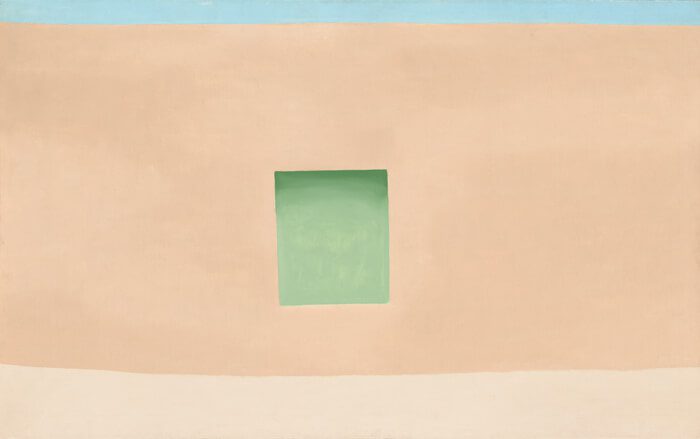
The astounding variety of works in Aftereffect helps form an energy flow from gallery to gallery. One wall features the colored pencil on paper works of Gretchen Marie Schaefer, who states that O’Keeffe’s “way of giving close attention to natural objects is a place of solidarity” for her. Indeed, Schaefer’s seemingly austere drawings of rocks are actually quite detailed and evocative.
In whatever manner O’Keeffe’s magnificent body of work wafts through artists’ brains and manifests itself in their own output—subliminally or more directly—it’s heartening to see the reverence running so deep in a show such as this, because in the process, it’s bringing O’Keeffe’s many lasting contributions to painting into focus. Colorado mixed-media artist Corey Drieth (his small pink-and-black gouache on wood, Saint #2, is quite obviously inspired by O’Keeffe) says it well: “She guides my eye as if it were my hand, silky brushwork exploring and caressing… her paintings momentarily capture a vibrant, fluttering longing to commune.”
